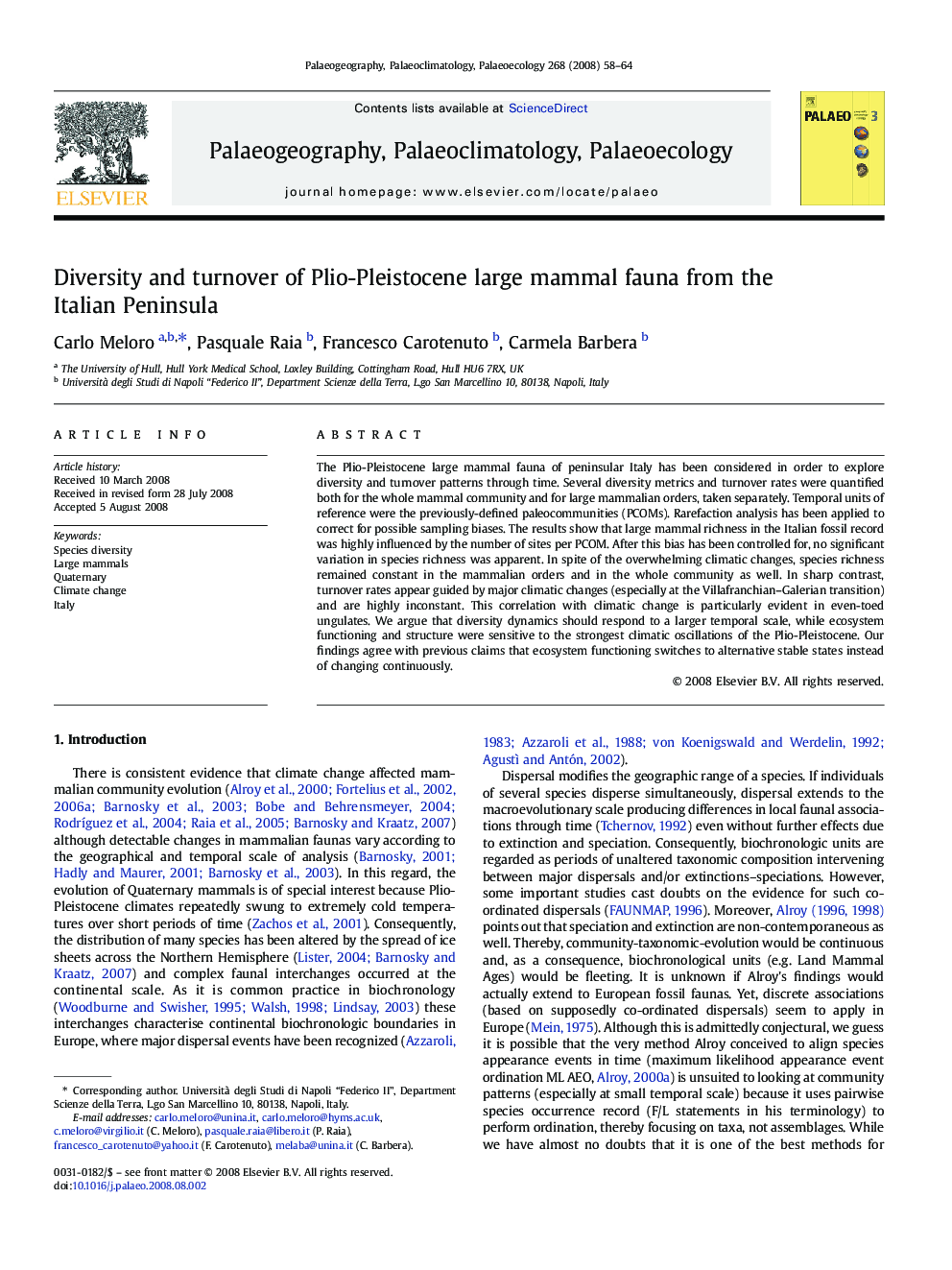| Article ID | Journal | Published Year | Pages | File Type |
|---|---|---|---|---|
| 4468414 | Palaeogeography, Palaeoclimatology, Palaeoecology | 2008 | 7 Pages |
The Plio-Pleistocene large mammal fauna of peninsular Italy has been considered in order to explore diversity and turnover patterns through time. Several diversity metrics and turnover rates were quantified both for the whole mammal community and for large mammalian orders, taken separately. Temporal units of reference were the previously-defined paleocommunities (PCOMs). Rarefaction analysis has been applied to correct for possible sampling biases. The results show that large mammal richness in the Italian fossil record was highly influenced by the number of sites per PCOM. After this bias has been controlled for, no significant variation in species richness was apparent. In spite of the overwhelming climatic changes, species richness remained constant in the mammalian orders and in the whole community as well. In sharp contrast, turnover rates appear guided by major climatic changes (especially at the Villafranchian–Galerian transition) and are highly inconstant. This correlation with climatic change is particularly evident in even-toed ungulates. We argue that diversity dynamics should respond to a larger temporal scale, while ecosystem functioning and structure were sensitive to the strongest climatic oscillations of the Plio-Pleistocene. Our findings agree with previous claims that ecosystem functioning switches to alternative stable states instead of changing continuously.
